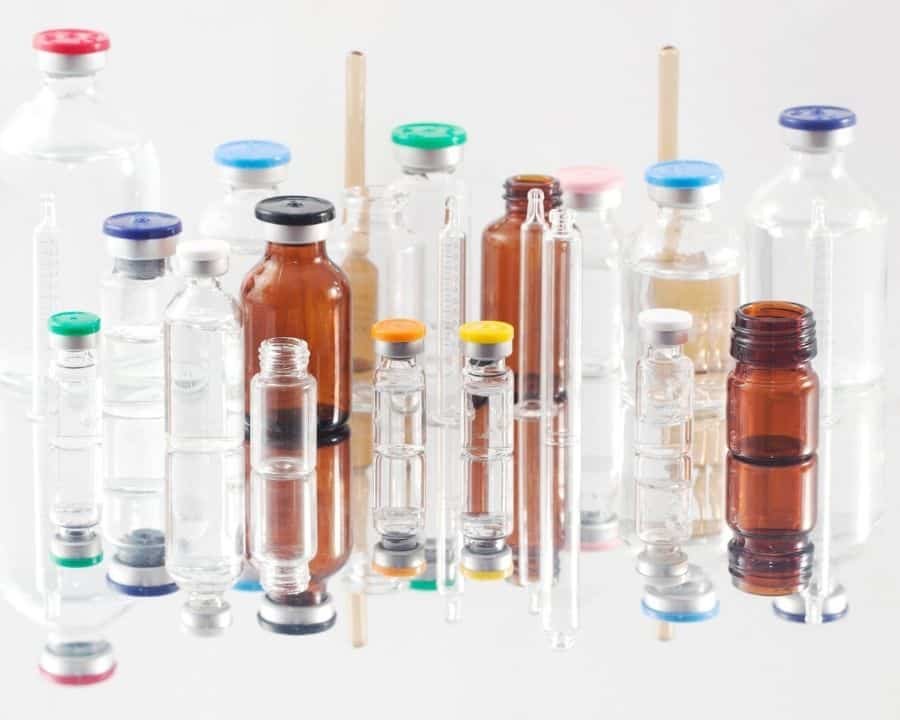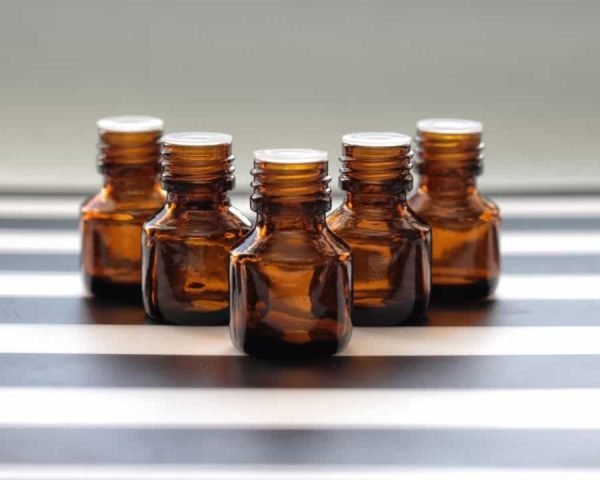Vials formed through different processes have their own personality and a situation that calls for them to serve their true purpose in life.
One situation wherein vials can be extremely different from one another is whether one is a tubular or a moulded vial.
If you want to know the difference between a tubular vial and moulded vial, read more on the details below.

Why is it important to know the difference between Tubular and Moulded Vials?
Believe it or not, there is an art in using the right type of vial for experiments or other use cases.
There is no such thing as one size fits all types of vial for experiments, storage, transport, etc.
For a specific vial, there will be complementary equipment, manner of handling, packaging, and other things that can make the most while staying on budget.
To put it shortly, the vial is only as good as the one who knows how to use it.
Type I, II, and III glasses can all produce moulded vials, but Type 1 is the best suitable for tubular vials.
You might think a moulded vial would be better versus a tubular vial, but that is not the case here.
The following sections of this article discuss the differences between the two.
What is the difference between Tubular and Moulded Vials?
Classifying vials into tubular and moulded refers to the technology used to manufacture them.
Generally, a tubular vial is produced by blow moulding through a blow and blow, or press and blow method.
A tubular vial is made by elongating a type I glass tubing and subsequently shaping and cutting it using a controlled flame.
The only thing that they both experienced was staying for a long time in an annealing lehr or a kiln with steady temperature control.
Still, they have key differences that also affect their applications:
Production process
Making a tubular glass vial utilizes glass formed into lengthy tubings with a more precise outer diameter or O.D.
On the other hand, a moulded vial is produced by blowing compressed air into a glob or mass of molten glass in a mould.
The moulded vial looks cuter and stronger, but theoretically, tubular glass production would make way for more vials produced in the same period.
Weight and the wall thickness difference
Since the tubular glass vial can be produced by elongating them, the more precise manufacturing allows for thinner walls.
As such, the tubular vials are generally lighter compared to moulded vials.
On the other hand, moulded vials will have thicker walls with a bit more variation in the thickness across the surface of the vial.
Visual difference
Tubular vials allow for more visual clarity brought about by the thinner walls.
Because of the uniform thickness, the surface of the vials become more smooth-looking.
One of the easiest ways to tell tubular and moulded glass vials apart is the presence of a more concave base.
If the vial has an almost flat base, it’s a tubular glass vial.
If it has a more concave base, it is a moulded vial. In addition, this vial has markings called punt marks, which could be a mould number and a unique marking distinguishing the manufacturer.
Mechanical resistance
Moulded vials have more mechanical resistance compared to tubular vials.
They would be more preferred than tubular vials when breakage is not much of an option. One example is when transporting the vial or needing to expose the vial to extreme temperatures.
Pricing difference
The difference is dependent on the size of the vial under consideration.
If production concerns smaller vial sizes, tubular glass vials would be more economical to produce.
But when talking about larger vial sizes, moulded vials would be more affordable.
Don’t forget to consider the wastage that may naturally come along, as long as packaging or transport solutions are needed depending on the use case.
Ultimately, the actual price depends on other factors beyond the vials themselves.
Where do I use Tubular or Moulded Vials?
Tubular and moulded vials have different applications in different environments.
Freeze-dry application
Tubular glass vials are the better choice for freeze-drying applications or lyophilization to enable the right amount and flow of temperature from the shelf of the freeze drier.
The moulded glass vials have a concave underside which does not permit the efficient transfer of heat into the shelf.
Using a tubular glass vial saves time and therefore cost of operation since the dry cycle can be shortened while achieving the same results.
Vaccines
Tubular glass is deemed more chemical-resistant, while moulded vials are considered stronger for the job.
Using tubular vials would also make it easier to see just if there is something wrong with the vial’s contents. It serves to fulfil the purpose of using glass in order to get a better view of the vial’s content.
However, it must be noted there will always be a risk of delamination. It is the event in which some particles of the glass disintegrate. They will then mix into the contents of the vial, making it appear cloudy. Delamination depends on the specific process in which the vials are formed and the materials used.
Contract Pharma has shared that there have been instances in the U.S. where recalls have been made due to delamination of vials. These resulted in lost revenue.
In early 2020, researchers from Merck shared that Valor glass is a promising solution for minimizing the risk of delamination. It utilizes the tubular manufacturing method.

General pharmaceutical purposes
Tubular glass vials are typically preferred since they can be produced with uniform thickness, lesser weight, and better visual appearance.
Of course, tubular glass vials will exclusively be made from borosilicate glass, which is chemically stable.
On the other hand, moulded vials can be made with other types of glass that can generate some extractable and leachable.
Therefore, it is possible that someone can make the expensive mistake of using a type II or type III glass vial to store something very delicate.
Still, moulded vials are treated as a backup option of manufacturers whenever the need arises, such as when there is a shortage of tubular vials.
Specimen storage
Vials can be used to store specimens for various purposes, such as when you are working on a study.
You should consider the right size and other properties such as chemical and temperature resistance.
From all the previously mentioned examples, you probably have a good idea in mind now specific to what you are trying to achieve.
If you intend to store a sample for publication, choose a vial that can protect the specimen and not cause any undue chemical reaction.
What glass type is used for tubular and moulded vials?
Moulded vials can utilize all three types of glass: type 1, type 2, and type 3.
However, tubular glass vials can only be reliably made using type 1 or borosilicate glass.
This type of glass is inert and highly resistant to chemicals. Because of this, it is particularly useful in storing contents that need to be free from contamination.
Are there situations where the right vial was not used?
Yes, there are many instances where some problems arose due to the wrong vial used:
Infection due to vial misuse
The Joint Commission has noted that adverse effects arose from misuse of single-dose or multiple-dose vials.
According to reports from the CDC or Centers for Disease Control and Prevention, some hospitals reuse syringes for multiple-dose vials or generally fail to follow infection control protocol.
These can be avoided if doses can be placed in smaller vials with less capacity, thus practically lessening, if not significantly preventing, lapses.
Perhaps vials can be engineered so that they cannot be reused, which is the intent for single-dose or single-use vials.
Patient life endangered due to the wrong vaccine
This situation is not about the vials themselves, but rather human error due to the similarity of some vaccine names or the vials themselves.
Vaccine vials are almost uniform, but it might be a future consideration that some tactile marks be provided in vials or their shape somehow modified.
If vials are not the same, preventable errors can even be prevented more.
Conclusion
Tubular and moulded vials have different applications simply because of their minor differences.
Whatever colour, size, or shape of vial you prefer, we got them all to meet your needs.
Send us a message for consultation, and we will gladly send a free sample to you.











